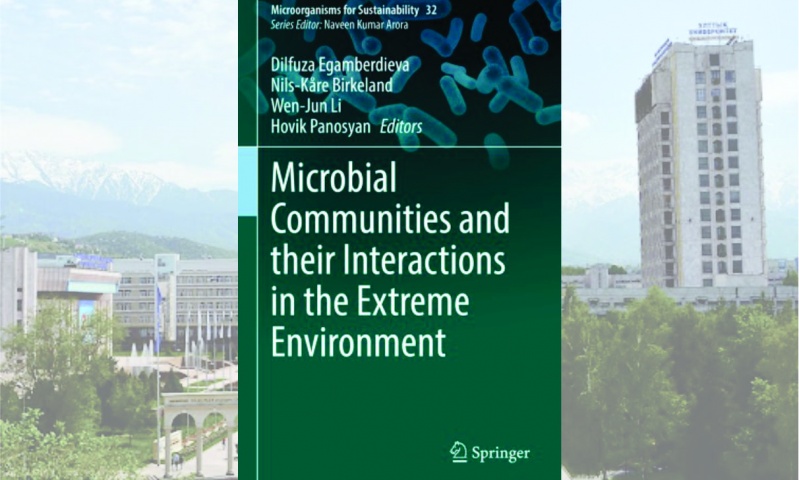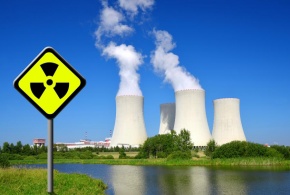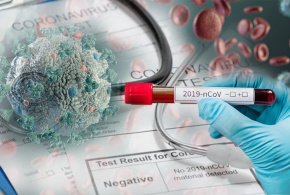
Al-Farabi KazNU scientists together with international partners published the results of scientific research in the collective monograph "Microbiological communities and their interaction in an extreme environment."
As foreign co-authors of the university scientists were: Nils-Kare Birkeland (Norway), Dilfuza Egemberdieva (Germany), Hovik Panosyan (Armenia), Wang-Jun Li (China).
The SPRINGER edition published two chapters “Microbial stress response to heavy metals” and “Analysis and characteristics of thermal springs in Kazakhstan”, which were included in the collective monograph “Microbiological communities and their interaction in extreme environments”. The scientific publication is devoted to topical problems of biological diversity and biotechnological application of extremophilic microorganisms.
The chapter "Microbial stress response to heavy metals" discloses the global environmental problem of environmental pollution by heavy metals, which pose a significant threat to all living organisms. The importance of studying the physiological mechanisms of plant resistance to the damaging effect of abiotic factors, including the use of effective microorganisms, is described. Its solution is of fundamental importance for understanding the strategy of plant survival in extreme conditions, as well as for the development of technology for protecting plants from the damaging effects of adverse environmental factors.
The chapter also provides information on studies of the effect of heavy metal ions on the growth of micromycetes with multiple resistance to zinc, copper, manganese and lead. The results of this study will help to effectively use the potential of microorganisms and their ability to increase plant resistance to stress factors. They can become the basis for the development of technology for growing plants.
In the next chapter "Analysis and characteristics of thermal springs in Kazakhstan", scientists analyze thermal springs in Kazakhstan and give them a description. In Kazakhstan, thermal waters are widespread, which is associated with the presence of large artesian basins with the immersion of water-bearing rocks at great depths and, accordingly, there are unique communities of microorganisms that are interesting for industrial biotechnology. In this chapter, scientists reveal the variety of thermal springs, their temperature regime, water chemistry and microbial diversity.



















 Сот белсенді Ермек Нарымбайдың мерзімінен ерте босап шығу туралы өтінішін орындамады
Сот белсенді Ермек Нарымбайдың мерзімінен ерте босап шығу туралы өтінішін орындамады
 Poverty and misery of …. “terrorists”
Poverty and misery of …. “terrorists”
 "Atomic" exam for officials of Kazakhstan
"Atomic" exam for officials of Kazakhstan
 Faculty of Journalism of the Al-Farabi Kazakh National University held an annual scientific and practical conference «Bekhozhinov readings»
Faculty of Journalism of the Al-Farabi Kazakh National University held an annual scientific and practical conference «Bekhozhinov readings»
 Kazakhstan signed an agreement with Russia on the allocation of vaccine against coronavirus
Kazakhstan signed an agreement with Russia on the allocation of vaccine against coronavirus
 The government of Kazakhstan intends to ease quarantine from 17 August
The government of Kazakhstan intends to ease quarantine from 17 August